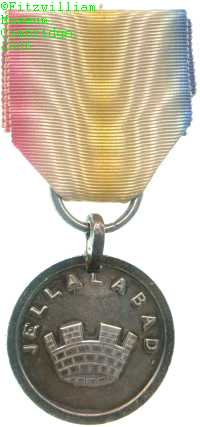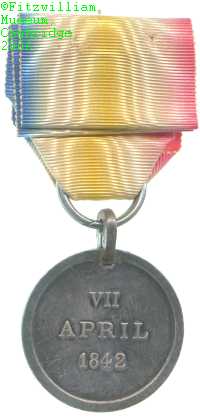
Obverse, a mural crown

Reverse, inscription

Obverse, a mural crown |

Reverse, inscription |
The First Afghan War of 1839 had culminated in the British restoration of the Shah Shujah al-Mulk, a situation which caused his dissatisfied people to rise in revolt in 1841. The murder of the British envoy provoked an initial evacuation of the British garrison, most of which was massacred on its march back to India. The British forces in Afghanistan were for a short while confined to those at the fort of Khelat-i-Ghilzai and the garrison of Jalalabad, which withstood siege until it could be relieved by the British a short while later in the campaign that restored British control in the area.
After the relief of Jalalabad the Governor-General of India determined on the issue of a silver medal for its defenders, but was dissatisfied with the result. When a shortfall was discovered the opportunity was taken to redesign the medal for the second issue. Those soldiers awarded the first were offered a free exchange of it for the second issue but very few chose to do so.
One such recipient was Private Joseph Walker of Prince Albert's Light Infantry, otherwise known as the 13th Foot Regiment. Lester Watson purchased his medal at some point before 1928.